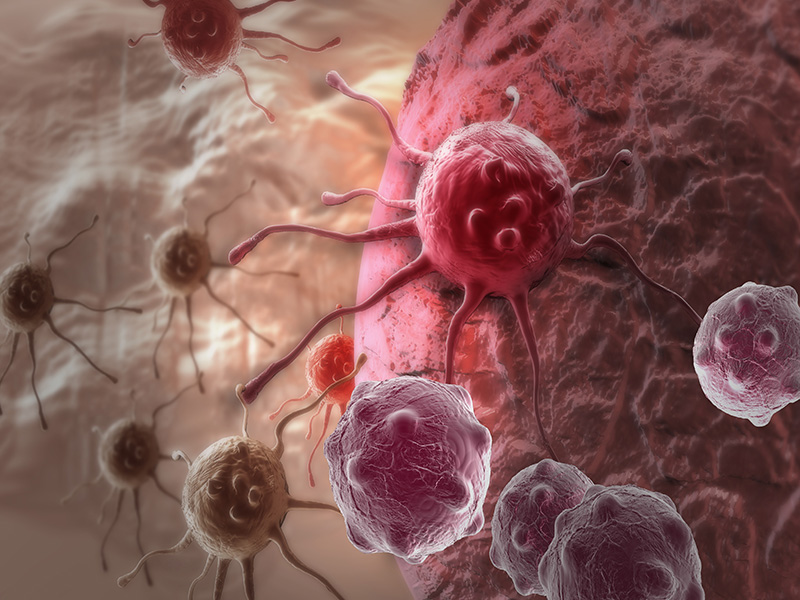
In September 2018, Health Canada approved, for the first time, the use of a chimeric antigen receptor T cell (CAR-T) therapy. Called Kymriah, it treats pediatric and young adult leukemia and adult lymphoma. The federal regulator is also reviewing a second gene therapy, called Yescarta, for an aggressive kind of non-Hodgkin lymphoma.
Both therapies are expensive, with Kymriah retailing in the U.S. for as much as US$475,000 and Yescarta for US$373,000 per treatment. While the price in Canada is still unclear, Cancer Care Ontario — which the provincial government is merging into super-agency Ontario Health — is negotiating the price with Novartis, the pharmaceutical company that produces Kymriah, on behalf of all provinces.
Read: Conference coverage: 2019 Employers Cancer Care Summit
Currently, 600 cellular therapies are in the pipeline for a variety of cancers, says Jean-Sébastien Delisle, a hematologist and associate professor of medicine at the University of Montreal. Besides cellular immunotherapy, which includes CAR-T therapy, immunotherapy can include the provision of antibodies that boost the immune system, helping it fight several types of cancer including skin, kidney and lung.
How it works
A CAR-T therapy timeline
1961
Origin of T cells discovered
1973
Bone marrow transplants used in cancer treatment
1986
Tumour-infiltrating lymphocytes used to treat cancer
1993
First-generation CARs developed
1994
Antigen-specific T cells used in humans
2002
First effective CAR T cells developed
2003
Second-generation CARs built to target CD19 antigen
2013
Results of CAR-T leukemia clinical trial published
2017
FDA approves CAR-T therapy for relapsed, acute leukemia in children and young adults
2018
Health Canada approves the first CAR-T therapy for leukemia in children and young adults and adult lymphoma
Source: Memorial Sloan Kettering Cancer Center
CAR-T therapy uses a patient’s own cells to treat blood cancer, says Delisle, noting practitioners harvest the cells and send them to a specialized laboratory where they’re genetically modified. “They insert [a molecule] into the cell that allows the immune cells to recognize a little bit of protein that we call antigen on the surface of the cancer cell,” he says. “So once you re-infuse these cells into patients, [they’ll] travel in the body, identify the cell with a marker, attack the cells and then persist and patrol like a living drug.”
Read: A primer on the role of drug access navigators
The therapy, which is administered as a transfusion, is intended for single use, says Delisle. It’s typically reserved for patients who have failed conventional treatments like chemotherapy and radiation because it could result in side-effects such as cytokine release syndrome, which causes a drop in blood pressure, brain swelling and fluid in the lungs, he says.
As a result, CAR-T therapy is currently limited to certain patients. “It’s highly efficient, but it can be dangerous because, at this point, we don’t know exactly how to control the reactivity of the cells,” says Delisle. “We will learn and the CARs of today will be very different from the CARs we will inject a few years from now. But currently, we are still [working] with a fairly rudimentary approach where we send in cells that are really equipped to cause a lot of damage.”
Patients who do undergo the treatment take biologic drugs like cytokine antagonists to manage the side-effects, he says. CAR-T therapy doesn’t guarantee a cure for everyone, with 90 per cent of pediatric and young adult leukemia patients going into remission and 50 per cent of those with lymphoma getting better, he adds.
Read: Rising cost of drugs, benefits plans top priorities for employers: survey
While it’s still too early for scientists to look at the therapy’s long-term effects, it does provide hope for people who haven’t been successful with all other types of therapies, says Delisle. And even though the treatment just debuted in Canada, there are already questions about how the next wave of genetic therapies will affect the health-care system. Will Canada’s public program absorb the costs or will employers eventually be obligated to fund some of these treatments through benefits plans?
The employer’s role
Employers already concerned about the sustainability of their drug plans will have to reflect on the implications of these new therapies, says Jean-Michel Lavoie, assistant vice-president of product development for group benefits at Sun Life Financial. “It’s a very big concern, and it’s not sustainable.”
Precision medicine like CAR-T therapy is one of the reasons the federal government must consider a framework for rare diseases and catastrophic illnesses, he says. “Employer plans can provide great access to a lot of treatments . . . . But when it comes to these rare genetic diseases and precision medicine, it creates a huge financial pressure.”
Read: Budget 2019: Feds to develop a strategy for high-cost drugs for rare diseases
Green Shield Canada is considering how the private payer system can fund genetic therapies in the future, says Ned Pojskic, the insurer’s leader of pharmacy and health provider relations. “What we’re doing is preparing ourselves to understand how we can best attack this from the perspective of pricing.”
The insurer may also consider pay for performance, which absolves insurers from further or partial payments if a drug doesn’t work, says Pojskic. “In some ways, we’re getting to a point where innovation is outpacing our ability to pay. And that’s challenging.”
Jann Lee is a former associate editor at Benefits Canada.
